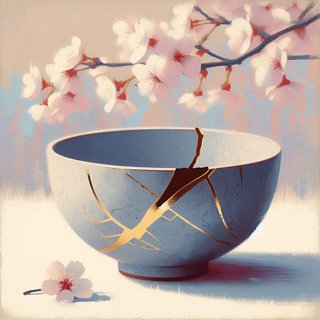 The Japanese aesthetic of wabi-sabi reveals beauty in imperfection, transience, and incompletion. It reflects a deep appreciation for the real and the natural, fostering humility and connection to the world around them.
The Japanese aesthetic of wabi-sabi reveals beauty in imperfection, transience, and incompletion. It reflects a deep appreciation for the real and the natural, fostering humility and connection to the world around them.
Centuries of tradition and Zen Buddhism root wabi-sabi, honoring life’s cycles of growth and decay. While society often obsesses over flawless ideals, this philosophy offers a different view: finding allure in what’s irregular and fleeting.
Consider kintsugi, or “golden joinery.” This Japanese art form involves mending broken pottery with gold. Rather than concealing the damage, they deliberately highlight the cracks with precious metal, transforming the object into a potent symbol of resilience and renewal. This appreciation for imperfection extends to their valuing of aged wood, antiques, and handcrafted items, where the wear and tear tell unique stories.
Wabi-sabi encourages acceptance of life’s inherent nature. Each flaw enriches one’s journey and deepens the broader human experience. This perspective frees individuals from chasing impossible perfection, celebrating life as it truly is.
Idea for Impact: Accept your natural flaws and challenge those unrealistic expectations. Embrace the beauty in repair and how things evolve.
 November 20 is
November 20 is  Conscience isn’t as reliable a guide on moral questions as it’s often made out to be. Consider
Conscience isn’t as reliable a guide on moral questions as it’s often made out to be. Consider  There’s a familiar drift to human existence: most people stumble through life—nudged by inertia, lulled by routine,
There’s a familiar drift to human existence: most people stumble through life—nudged by inertia, lulled by routine,  Gratitude
Gratitude  David McCullough Jr., son of historian
David McCullough Jr., son of historian  Philosophy transcends mere instrumentality; it delves into the depths of existence, ethics,
Philosophy transcends mere instrumentality; it delves into the depths of existence, ethics, .jpg)